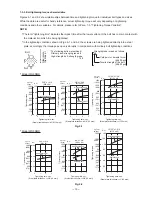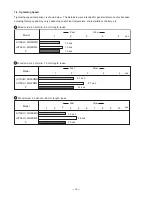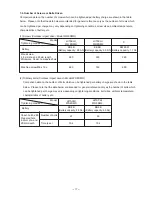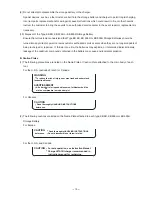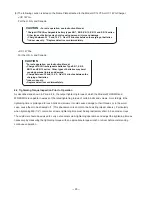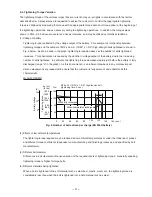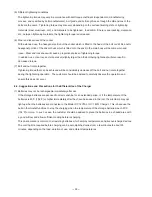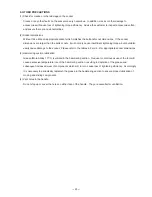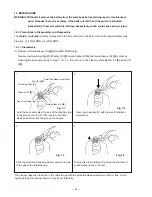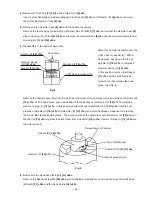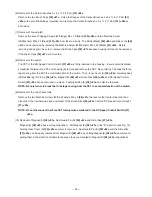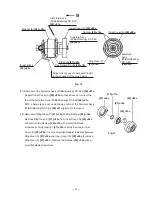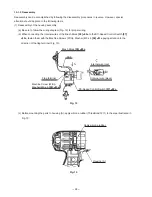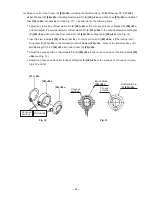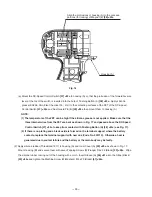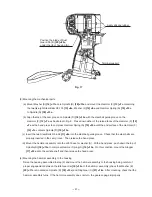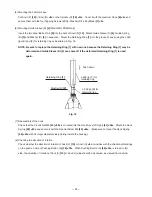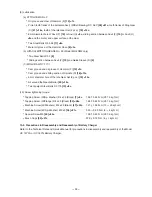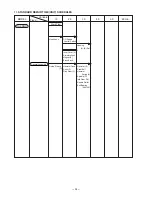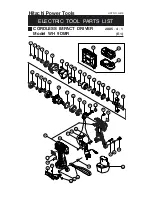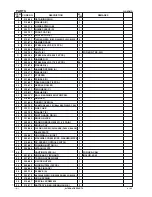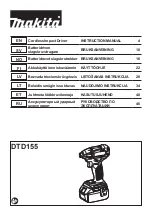
--- 22 ---
(5) Different tightening conditions
The tightening torque may vary in accordance with bolt torque coefficient (dependent on manufacturing
process, and specified by bolt manufacturers), bolt grade and bolt length, even though the dimensions of the
bolts are the same. Tightening torque may also vary depending on the surface finishing state of tightening
materials (steel, aluminum, etc.), and materials to be tightened. In addition, if there is seal packing, clearance,
etc., between tightening materials, the tightening torque is decreased.
(6) Wear and looseness of the socket
With extended use, the hexagonal portion of the socket which is fitted to the head of the bolt or drill bit, and/or
hexagonal portion of the driver chuck which is fitted onto the anvil in the main body will become worn and
loose. Wear and looseness will cause a proportionate loss of tightening torque.
In addition, use of an incorrect size socket (slightly larger than the bolt being tightened) will also result in
decreased torque.
(7) Bolt and nut rotate together
Tightening torque that can be achieved will be considerably decreased if the bolt and nut rotate together
during the tightening operation. The customer should be advised to carefully observe the operation and
ensure this does not occur.
8-4. Suggestions and Precautions for the Efficient Use of the Charger
(1) Batteries may not be rechargeable immediately after use
If the storage batteries are exposed to direct sunshine for an extended period, or if the temperature of the
batteries is 40
û
C (104
û
F) or higher immediately after they have been used in the tool, the pilot lamp may not
light up when the batteries are connected to the Model UC 14YFA or UC 18YG Charger. This is because the
built-in thermostat functions to stop the charging when the temperature of the storage batteries reach 40
û
C
(104
û
F) or more. In such a case, the customer should be advised to place the batteries in a shaded area with
a good airflow, and allow sufficient cooling before recharging.
This phenomenon is common to all existing batteries which employ temperature sensitive overcharge devices.
The cooling time required before charging can be accomplished varies from a few minutes to about 30
minutes, depending on the load, duration of use, and ambient temperatures.








